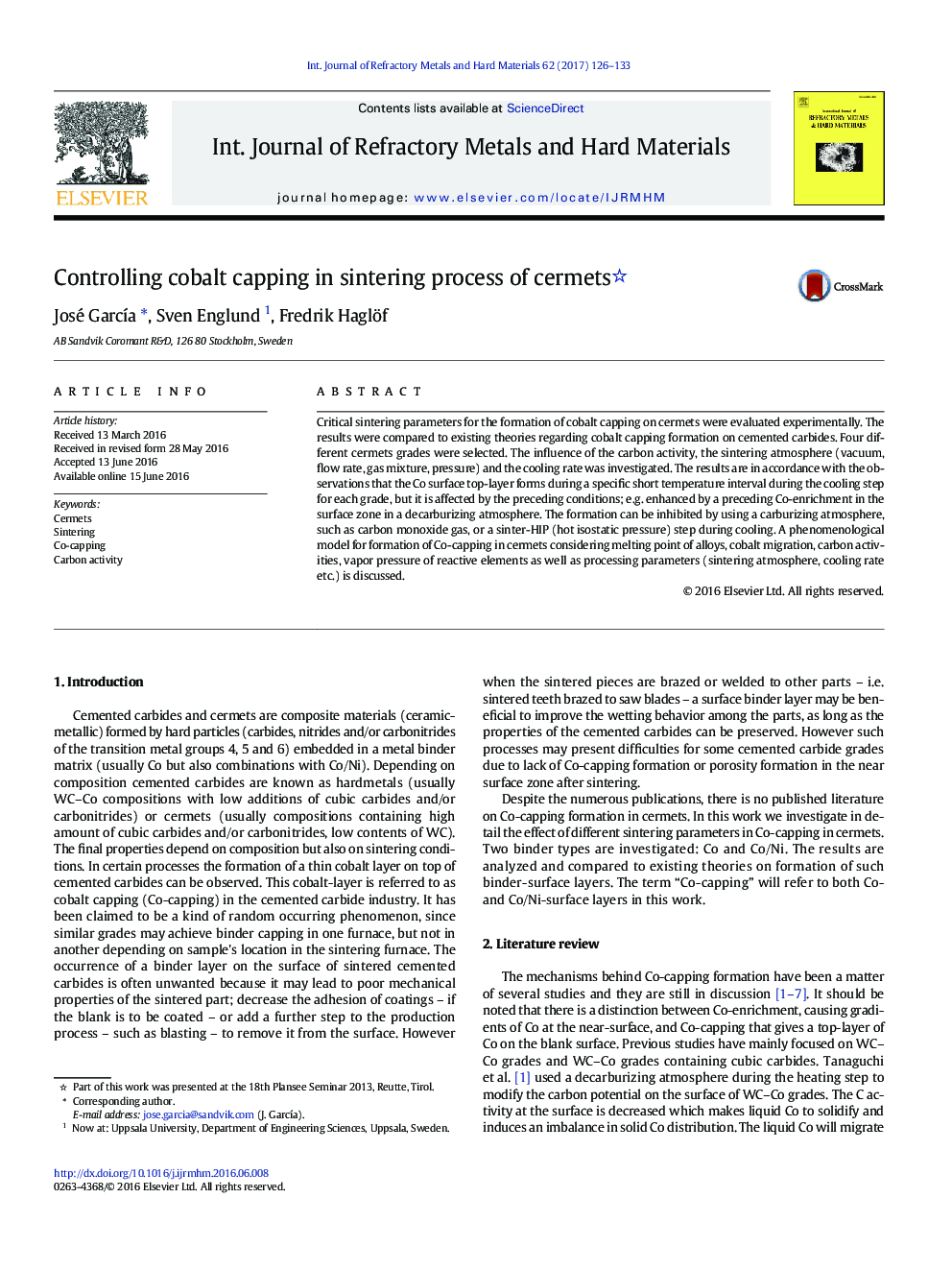| Article ID | Journal | Published Year | Pages | File Type |
|---|---|---|---|---|
| 5457900 | International Journal of Refractory Metals and Hard Materials | 2017 | 8 Pages |
â¢Sintering parameters (time/temperature/pressure/atmosphere) influencing Co-capping in cermets studiedâ¢Co-capping in cermets occurs during specific temperature interval during solidification.â¢Co-capping can be avoided by increasing the carbon activity in the surface of the cermets.â¢Cermets with higher solidus temperatures and longer solidification intervals are more sensitive to binder evaporation.
Critical sintering parameters for the formation of cobalt capping on cermets were evaluated experimentally. The results were compared to existing theories regarding cobalt capping formation on cemented carbides. Four different cermets grades were selected. The influence of the carbon activity, the sintering atmosphere (vacuum, flow rate, gas mixture, pressure) and the cooling rate was investigated. The results are in accordance with the observations that the Co surface top-layer forms during a specific short temperature interval during the cooling step for each grade, but it is affected by the preceding conditions; e.g. enhanced by a preceding Co-enrichment in the surface zone in a decarburizing atmosphere. The formation can be inhibited by using a carburizing atmosphere, such as carbon monoxide gas, or a sinter-HIP (hot isostatic pressure) step during cooling. A phenomenological model for formation of Co-capping in cermets considering melting point of alloys, cobalt migration, carbon activities, vapor pressure of reactive elements as well as processing parameters (sintering atmosphere, cooling rate etc.) is discussed.
Graphical abstractDownload high-res image (99KB)Download full-size image
